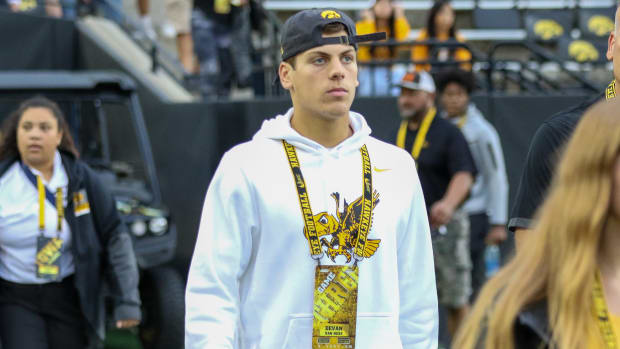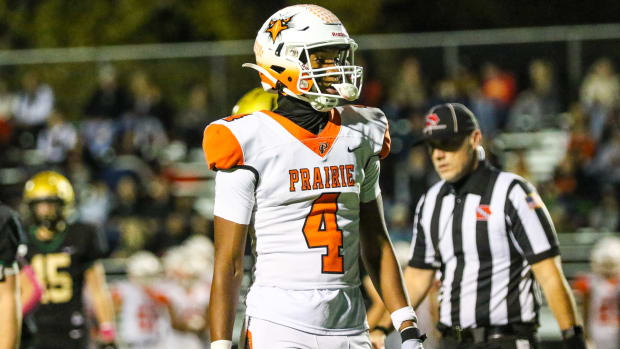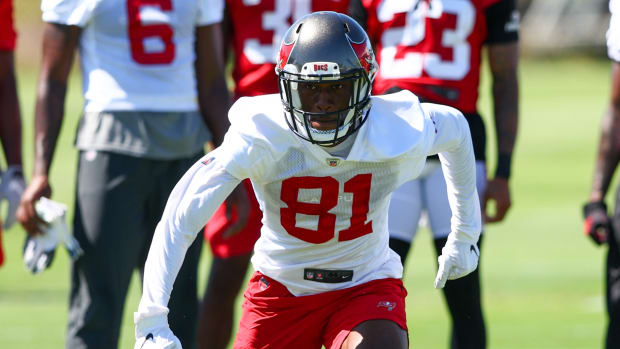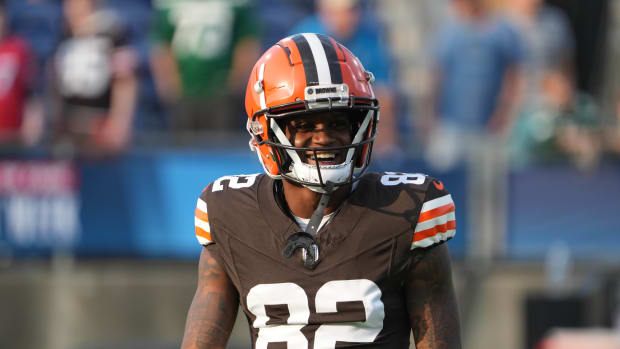A Spring College Football Season? Bring A Blanket To Kinnick
The rise in COVID-19 cases around the nation is leading to skepticism on if there will be a college football season in the fall.
The Ivy League announced on Wednesday that there would be no fall sports, and that football could be pushed back to the spring. One report had the Big Ten considering a 10-game conference-only schedule spread over a period of 13 or 14 weeks.
On Thursday, the ACC announced there would be no events for the fall season until Sept. 1.
As COVID-19 cases rise around the nation, and programs such as Ohio State and North Carolina shut down their voluntary workouts because of the positive testing numbers, pessimism grows that there will even be a college football season in the fall.
But what about a spring season? Such an idea has been considered, even as far back as April. And if the Big Ten can't go through with its conference-only fall plan, it could happen.
There are plenty of drawbacks.
One, to make that decision boxes conferences and athletic directors into a time frame that still has its uncertainties. There is no certainty there will be a COVID-19 vaccine at that point, and if a winter wave of the virus hits, there would be no season at all.
There also is the concern of athletes playing two seasons of games and practices in a period of 10 months. Juniors and seniors with NFL potential would likely opt out of the spring season, because the NFL Draft won't be moved back to accommodate the season.
And for schools in northern conferences, there is also a concern about weather.
To play even a 10-game conference-only schedule in the spring would likely require a February start, either with practice or games, or both.
So, here's a look at the weather history in Iowa City for the spring Saturdays in 2021.
The story in so many numbers — it will be cold in Kinnick Stadium.
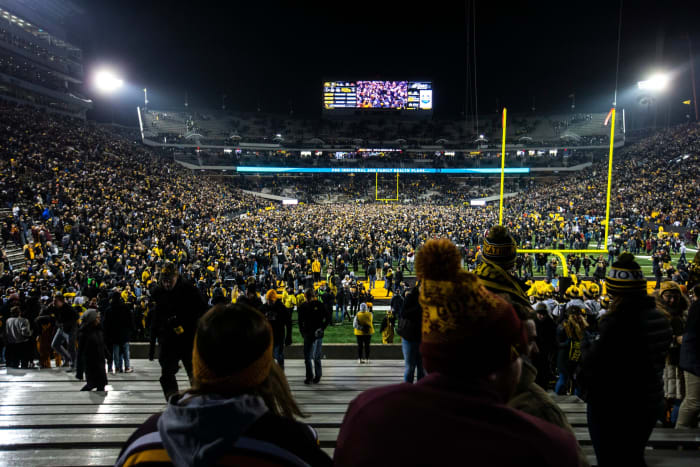
Minnesota fans sit in the stands as Iowa fans swarm the field after the Hawkeyes defeated the previously-unbeaten Gophers last November at Kinnick Stadium. (Joseph Cress/Iowa City Press-Citizen for USA Today Sports)
Average temperatures
| Date | Average High | Average Low |
|---|---|---|
Feb. 6 | 34.4 | 15.5 |
Feb. 13 | 36.3 | 17.4 |
Feb. 20 | 38.7 | 19.8 |
Feb. 27 | 41.6 | 22.5 |
| Date | Average High | Average Low |
|---|---|---|
March 6 | 45.0 | 25.3 |
March 13 | 48.6 | 28.1 |
March 20 | 52.3 | 30.7 |
March 27 | 55.9 | 33.2 |
| Date | Average High | Average Low |
|---|---|---|
April 3 | 59.3 | 35.6 |
April 10 | 62.5 | 38.1 |
April 17 | 65.4 | 40.6 |
April 24 | 68.0 | 43.2 |
Temperatures in 2019 and 2020
| Date | 2019 High | 2019 Low | 2020 High | 2020 Low |
|---|---|---|---|---|
Feb. 6 | 30.0 | 10.9 | 36 | 11 |
Feb. 13 | 30.8 | 3.9 | 22 | -2 |
Feb. 20 | 28.9 | -2.9 | 23 | 6 |
Feb. 27 | 24.1 | 9.0 | 36 | 22 |
| Date | 2019 High | 2019 Low | 2020 High | 2020 Low |
|---|---|---|---|---|
March 6 | 18 | 0 | 49 | 29 |
March 13 | 43 | 27 | 50 | 29 |
March 20 | 53.1 | 23 | 44 | 33 |
March 27 | 53.1 | 25 | 54 | 43 |
Record highs and lows
February and March can be especially unpredictable, given the record highs and lows.
| Date | Record High | Record Low |
|---|---|---|
Feb. 6 | 58 | -15 |
Feb. 13 | 64 | -10 |
Feb. 20 | 64 | -10 |
Feb. 27 | 68 | -14 |
| Date | Record High | Record Low |
|---|---|---|
March 6 | 73 | -12 |
March 13 | 77 | 5 |
March 20 | 72 | 3 |
March 27 | 81 | 7 |
Average snowfall
| Month | Snowfall (in inches) |
|---|---|
February | 6 |
March | 3 |
April | 1 |
